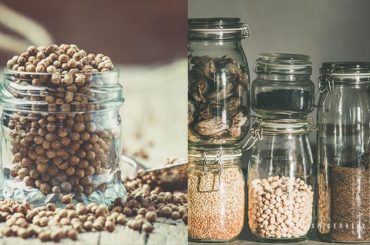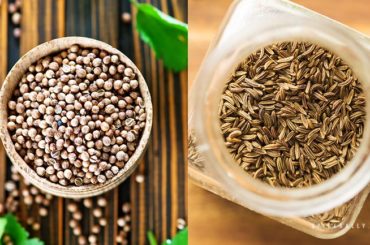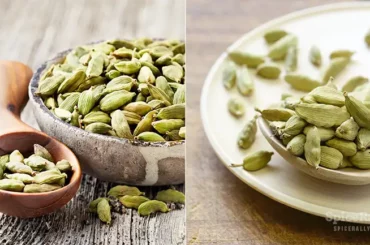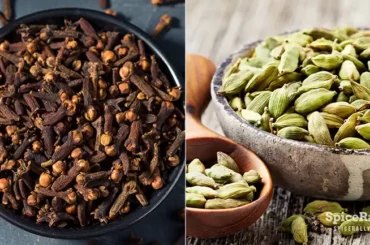Cinnamon is undoubtedly among the most prevalent spices you can spot in the kitchen. Aside from its rich flavor and tempting aroma, this spice is also known for its remarkable health benefits.
There are two prime types of cinnamon- “Ceylon Cinnamon” and “Cassia Cinnamon“. The other two commercially significant varieties are Korintje Cinnamon and Saigon Cinnamon.
So, in this detailed feature, we hope to discuss everything that matters about this amazing spice. Refer to this article further to learn more about the two wide varieties of cinnamon, their uses, health benefits, and many more.

Types Of Cinnamon
This autochthonous spice, which belongs to the Lauraceae species, is a commonly used food flavoring agent in almost every house. It derives from an evergreen plant belonging to the Cinnamomum genus. The history of cinnamon runs back to 2000 BC and has been used by our ancestors for multiple health and medicinal purposes apart from seasoning their food from it.
Technically there are four types of cinnamon. They are:
- Ceylon Cinnamon or Mexican Cinnamon (“true” cinnamon)
- Cassia Cinnamon or Chinese Cinnamon
- Indonesian Cinnamon or Korintje Cinnamon
- Vietnamese Cinnamon or Saigon Cinnamon
Two Main Types Of Cinnamon
Although there are four varieties of cinnamon available in the market, Ceylon Cinnamon and Cassia Cinnamon are the dominant types. Ceylon Cinnamon also acknowledged as “true cinnamon,” is taken from Cinnamomum verum, a cinnamon tree inherent to Sri Lanka and southern India.
Moreover, Cassia cinnamon has diverse sources. The important ones are Chinese Cassia (Cinnamomum cassia), grown essentially in south China, Vietnam, and Burma. And, Indonesian Cinnamon (Cinnamomum burmannii) is principally from Indonesia and Sumatra.

However, the quality and value of cinnamon rely upon determinants such as biological origin, climatic contingencies, and practices of harvesting and manufacturing. On top of all, the so-called true cinnamon or Ceylon Cinnamon has a unique zing complex from Cassia, signifying somewhat sweeter and not as intense.
Coumarin Level In Cinnamon
Another notable variation is in the amount of coumarin, which may adversely impact human well-being. Coumarin is a naturally transpiring material discovered in an extensive assortment of plants.
It can cause liver damage or complete failure when consumed in excessive amounts. They could be found with a balmy flavor, including green tea or citrus fruits.
Still, the primary source of coumarin in human nutrition is cinnamon. Surprisingly, there are potentially high amounts of coumarin in cassia cinnamon.
It holds up to 1 percent coumarin, while on the contrary, Ceylon cinnamon carries only a minimum amount- approximately 0.004 percent.
However, due to the high prices of Ceylon cinnamon, cassia cinnamon is frequently employed in the food industry.
Yet, replacing Cassia for Ceylon cinnamon in some countries is banned. Hence, it is required to utilize logical means to distinguish between the two main varieties and identify food contamination.
The following table explains the commonly used name, the scientific term, and the properties of each type of cinnamon, including the level of coumarin.
| Common Name | Scientific Term | Properties |
| Ceylon cinnamon or Mexican cinnamon (true cinnamon) | Cinnamomum zeylanicum | Expensive. Somewhat sweet in taste, light to medium reddish-brown in color, and possesses the lowest coumarin content. |
| Cassia Cinnamon or Chinese Cinnamon | Cinnamomum aromaticum | Cheap. Bitter and spicy in taste, it contains high coumarin levels and has a robust flavor and dark reddish-brown in color. |
| Indonesian cinnamon | Cinnamomum burmannii | Cheap.Spicy in flavor, dark reddish-brown in color, cheap, and high coumarin levels with a strong aroma. |
| Vietnamese Cinnamon | Cinnamomum loureiroi | Cheap. Sweet and also spicy, dark-reddish brown in color, has a strong fragrance and possesses high coumarin levels. |
By-Products Of Cinnamon

Most of the time, cinnamon is incorporated into food in its powdered form. And, we can commonly witness those housewives of typical South Asian cuisines add crushed cinnamon sticks in their recipes. Moreover, cinnamon is a key ingredient in most of their spice mixtures. In addition to the powdered version and sticks of cinnamon, we can find other by-products of it, such as:
- Cinnamon essential oil
- Cinnamon infused cosmetics (Soap bars, perfumes, face wash, exfoliators)
- Cinnamon herbal tea
- Cinnamon Toothpicks
- Cinnamon infused maple syrup or bee honey
- Cinnamon incense sticks
- Cinnamon household cleaners ( Disinfectant liquids)
- Cinnamon infused oral care products
Cassia Cinnamon Vs Ceylon Cinnamon
Both Cassia and Ceylon Cinnamon are highly used ingredients in most Asian, European, Mexican and American cooking. Cinnamon is one of the best companions of Asian chefs when it comes to seasoning their savory dishes.
On the other hand, it is an elite ingredient to add a unique flavor and texture to most baking goods made in European and American countries.
However, at a glance, you may not notice any significant difference between Cassia and Ceylon cinnamon when they are in their powdered forms. But, the cinnamon sticks are relatively distinct from one another.
Cassia cinnamon sticks are a rolled-up dense, solid layer of bark. Whereas, Ceylon is numerous fragile, delicate layers of bark rolled and pressed together. Plus, Ceylon cinnamon tends to be lighter in appearance than Cassia.
Most people consider Ceylon cinnamon as “true” cinnamon, while Cassia is recognized as “false” by some. This is not because Cassia is actually fake cinnamon.
It is solely for the reason that Ceylon cinnamon is genuinely leading in quality and taste than Cassia. Moreover, Ceylon is remarkably lower in coumarin levels than Cassia, and therefore people prefer consuming Ceylon cinnamon more.
And Cassia is readily available in any supermarket while Ceylon is a bit hard to find. It is also not a secret that Ceylon cinnamon gives that “perfection” with its mild and delicate tang to desserts and other dishes when added more than Cassia.

In terms of prices, Ceylon cinnamon is relatively expensive when compared to Cassia cinnamon. However, part of the breakdown between the two originates from the convenience of the labeled cinnamon.
It is allowed to specify both “Ceylon” and “Cassia Cinnamon” as cinnamon in the US. Meanwhile, Cassia must be marked or labeled “Cassia” in the UK and other countries and cannot be named solely as “cinnamon”.
If you are interested in learning about Thai Spices, we have a complete article, here, on all traditionally used Thai spices that you too may want to include in your recipes.
Which Type Of Cinnamon Is Best?
As we discussed earlier in this article, Ceylon and Cassia are the most prevalent types used by people around the world. In that case, when it comes to comparison, these two varieties are in the competition.
Therefore, the claim is pretty loud and apparent when considering the facts that we have brought up in the section above. Ceylon cinnamon is very low in terms of coumarin, a toxin that can harm your liver. But Cassia has more coumarin levels relative to Ceylon.
Furthermore, Ceylon cinnamon has a brighter, lighter, mild, and delicately sweet flavor, which could make the food taste heavenly when added. On the other hand, Cassia, too, adds a flavor to food, but it is way more bitter and spicy and sometimes could even twist-turn the entire taste of a particular dish.
However, depending on several factors, Ceylon is comparatively high in price. These factors include its method of production, quality, and nutritional values. Thus, according to the views of the experts and from the social data we have collected, it is evident that Ceylon cinnamon is the best in almost all aspects.
Why Is Ceylon Cinnamon So Expensive?
There are numerous factors for Ceylon cinnamon to be high in price when compared with other cinnamon varieties. So, in this segment, we will bring you facts to prove why Ceylon has become so expensive and commendable.
Ceylon cinnamon is endemic to merely one region of the world. It can be primarily seen in the southwest part of Sri Lanka. In fact, the production of this variety is not an easy task. It requires hours and hours of meticulousness and thorough commitment.
Ceylon cinnamon is specified after the old British term for Sri Lanka, and it is usually deemed “true” cinnamon. Nurturing these trees is a real investment.
We say this because the growers must wait patiently for four years after a tree is planted before they can work on harvesting.
The cinnamon trees must be cared for consistently throughout the year. If not, the branches will not be fitting for obtaining cinnamon at all. The most labor-thoroughgoing part begins after they are extracted from the tree.
Need to master your knowledge of cinnamon? Now since you know everything about the types of cinnamon, click here to learn the Difference Between Saigon cinnamon and Ceylon cinnamon.
This process is very intensive where they have to peel and shave the skin of the bark by removing the nodules and smoothing them. They will then keep the extracted quills to be sun-dried.
The bark must be highly fragile to produce the most valuable cinnamon. None of the steps in this process are done by using machines but only done using the hands of the workers.
This procedure is one crucial factor for Ceylon cinnamon to be high in price. However, the remaining tinier pieces are converted into powdered cinnamon, making up the most affordable version.

Yet, even the most valuable Ceylon quills are frequently misled with Cassia cinnamon which does not require much effort or time for production. Cassia bark is rugged and firm, so quills are offered as one rolled section of bark without the stuffing.
On the other hand, Ceylon cinnamon is delicate and light and requires those internal layers to avoid the quill from cracking. As stated on top, Cassia also includes higher levels of coumarin.
This is why experts suggest that Ceylon cinnamon is eventually the healthier choice and another reason for it to become expensive.
According to the social data we gathered, we see that most consumers worldwide favor using Ceylon cinnamon despite its price as they prefer the real stuff.
However, with the increasing demand, Sri Lanka has apparently encountered a bit of struggle when meeting the requirements. Though the market was supposed to develop by 2025, climate changes posed grave intimidation to the production of cinnamon.
Since cinnamon trees need damp and moist soil to grow at their best, endless dry weather could kill them and lower their productivity. In addition, the data further shows that there is a lack of cinnamon peelers.
The Ceylon cinnamon industry relies essentially upon professional and experienced peelers. Thus, this is another primary factor for this type of cinnamon to be very high priced.
Moreover, the farmers from Sri Lanka state that there could be a threat to the future production of Ceylon cinnamon as the generation after them is not much interested in their industry. So, we can hopefully expect that the price of Ceylon will rise further with all aspects.
Which Type Of Cinnamon Is Healthiest?
From the very olden days, our ancestors have employed cinnamon for its invaluable medicinal and health benefits. Cinnamon basically carries essential oils and other derivatives, such as cinnamic acid, cinnamaldehyde, and cinnamate.
However, with regard to all the scientifically backed data provided by the experts, we can see that Ceylon cinnamon or “true” cinnamon is the most healthier option than Cassia or any other variety of cinnamon.
The main reason for this is the lower presence of coumarin content in Ceylon cinnamon. In fact, the amount of coumarin varies drastically with each of these cinnamon types.
A study carried out in 2013 has shown that one kilogram of Cassia Cinnamon powder comprises around 2.1-4.4 g of coumarin. This means, one teaspoon of Cassia cinnamon powder would have approximately 5.8 – 12.1 mg of coumarin.
This is beyond the Tolerable Daily Intake (TDI) for coumarin of 0.1 mg/kg body weight/day approved by the European Food Safety Authority (EFSA). Hence, as a point of conclusion, we see that Ceylon cinnamon is way more healthier than Cassia or any varieties of cinnamon that you could purchase from the market.

Here are some of the expected health benefits that cinnamon could offer:
- Regulates blood sugar.
- Helps with weight loss.
- An abundant source of antioxidants.
- Contains anti-inflammatory properties.
- Provides potential help in cutting the risk of heart diseases.
- It helps to lower diabetes.
- Cinnamon has potentially advantageous effects on neurodegenerative diseases.
- May have protection against certain types of cancer.
- Fights against bacterial and fungal infections.
- It helps to fight against certain sexually transmitted diseases like HIV.
Just like cinnamon, ginger has also become a hotshot in kitchens all over the world. To excavate more details, dig into our article here on how to use ginger in cooking.
The Summary
Cinnamon is a superior food flavoring that has a great history known for its unique flavor, aroma, and medicinal values. There are altogether four types of cinnamon that can be found in the market- Ceylon cinnamon, Cassia cinnamon, Saigon cinnamon, and Korintje cinnamon.
Out of these four, the two prevalent varieties are Ceylon cinnamon and Cassia cinnamon. So, as we discussed throughout this article, you can see that Ceylon cinnamon is a winner in comparison with the other three types, especially with Cassia which is easily accessible from most supermarkets in the world.
There are multiple reasons why Ceylon cinnamon has won its place. It is indeed high in quality, flavor, and texture. And, most importantly, Ceylon cinnamon is relatively very low in coumarin content when compared with any other variety of cinnamon.
Hence, this is all about types of cinnamon, and we hope we have presented you with enough information so that you can choose what kind of cinnamon you should use when seasoning your next recipe.




